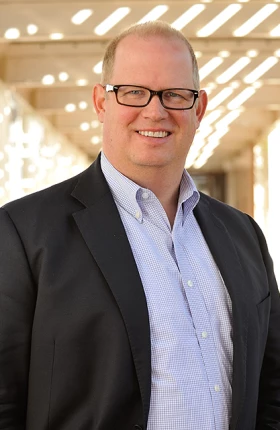Many US cities and states are expanding pre-K programs: 43 states now offer some form of publicly funded pre-K, and pre-K enrollment is at an all-time high. The push to expand high-quality pre-K is a worthy development—but for many children such efforts are simply too little, too late. Too little, because such programs usually emphasize academics over whole-child development; too late, in that school-based pre-K programs miss opportunities to help children and their families in the critical period from birth to age three.
Research shows that high-quality early-childhood education (ECE) is a critical factor in childhood development and long-term success, in reducing the achievement gap between children of different races and economic groups, and in creating strong communities. The Annie E. Casey Foundation, for example, has found that children who are reading on grade level by the third grade are far more likely to graduate from high school than those who are not, and that children who participate in high-quality ECE programs are more likely to hold stable employment and less likely to need public assistance as adults. Evidence suggests that ECE helps create better and safer communities and increases local tax revenue over time. (See “What the Research Says About Early-Childhood Education.”)
WHAT THE RESEARCH SAYS ABOUT ECE
Researchers have studied ECE and development for decades. Debate and discussion continue, but there are a few things we know about ECE and a few things we are still learning.
We know that early learning matters, a lot. The Harvard Center on the Developing Child estimates that about 80% of brain development happens in the first three years of life, when 700 to 1,000 neural connections form every second. We also know that gaps in this progress emerge between children from different backgrounds. Researchers from Stanford University found that by age two, children from low-income families can be six months behind their peers from high-income families in language processing skills and vocabulary, for instance.
We know that early learning lays the foundation for later success in school and life. The evidence shows that ECE helps create better and safer communities and increases local tax revenue over time. Even after controlling for a child’s cognitive ability, early math and reading skills are highly correlated with later math and reading achievement.
We also have some promising examples of ECE programs that have achieved tremendous long-term outcomes, including the Abecedarian Project in North Carolina, the Perry Preschool Project in Michigan, and the Chicago Child-Parent Centers. Researchers from the University of North Carolina have estimated that every $1 spent on Abecedarian delivered $2.50 worth of total benefits for society, as a result of higher incomes, reduced health care costs, and less need for public assistance. University of Chicago economist and Nobel laureate James Heckman has calculated that for every $1 spent on Perry Preschool, total benefits to society ranged from $7 to $10 in the form of increased lifetime earnings and reduced remedial education and welfare payments—what Heckman calls an “extremely high rate of return.”
At the same time, we are still learning more about what exactly drives quality in early learning and how best to design coherent large-scale, early-learning systems at the state and local levels. A 2016 study from Dale Farran and Mark Lipsey at Vanderbilt University attracted considerable attention for its finding that academic gains for children enrolled in Tennessee’s Voluntary Pre-K Program “faded out” by third grade.
While we believe the research clearly shows that high-quality early-learning programs can have a great impact on long-term outcomes for children and are well worth the investment for society, we also support continued research to better understand what works and what doesn’t.
So much childhood development happens outside the realm of formal schooling—in households, doctor’s offices, and child- care centers, and through informal interactions with adults—and during the pivotal years of a child’s life before he or she enters pre-K. Therefore, it is time to rethink approaches to ECE. Shift the focus from a narrow view of education to the development of the whole child. Replace the too-narrow emphasis on school-based pre-K programs for three- and four-year-olds with one that spans the period from birth through third grade. And move from the largely siloed operation of each sector involved in child development to collaboration among sectors, with the shared goal of children’s success.
Some forward-looking cities are already making real headway in rethinking ECE so that they can implement a more comprehensive and cooperative approach. In this article, we discuss why this new thinking matters and profile select cities that are leading the way. In doing so, we draw upon our own experiences working with ECE clients and on a national gathering about early learning that we hosted in November 2016, featuring 19 US cities.
Toward a Whole-Child-Development Approach
Malnutrition, emotional disorders, developmental delays, and unstable home environments are among the barriers to learning and to broader child development. ECE programs must address these issues.
Too often, public rhetoric surrounding ECE focuses narrowly on that last word, education, with insufficient attention to meeting the physical and emotional needs of the whole child. But early-childhood-development experts increasingly recognize the importance of whole-child development. For example, proper nutrition during the 1,000-day window stretching from a mother’s pregnancy through a child’s second birthday sets the tone for that child’s healthy brain formation and physical growth. Some programs—the Nurse-Family Partnership, for example—have demonstrated results in addressing this need, but often they come from outside of the education system.
Indeed, these sorts of services have not typically been part of large-scale, public ECE programs, but the very best programs and centers include them as a matter of course, providing additional support such as home visits or programs that address a child’s emotional well-being.
The oft-studied Abecedarian Project in North Carolina in the 1970s and 1980s provided an array of support services to low-income children starting at birth and continuing through age five, including onsite heath care from staff pediatricians and year-round, five-day-a-week child care that incorporated play-based education. Researchers tracked the children into adulthood and found that by age 30, participants were four times more likely to have graduated from a four-year college and five times less likely to have used public assistance.
More recently, Lumin Education—a Dallas-based network of four early-childhood schools that was nationally recognized in 2013 as an Exemplar by the Trust for Learning—offers numerous forms of support including a home visit program to teach parents how to be actively involved in their child’s education, classes for children from age one through nine, and play therapy that helps a child manage emotional and behavioral problems. Graduates of Lumin centers have a 94% high school graduation rate (versus 69% among peer children in the same neighborhood), showing long-term benefits from an intervention that runs only through third grade. (Kelsey Clark, a coauthor of this article, is a member of Lumin’s board of directors.)
What would serving the whole child look like at a city level?
In recent years, New York City has been pursuing a whole-child approach through its Community Schools Initiative, among other measures. The Community Schools program expressly marries “strong instruction” and “robust engagement” with families and community members: school programs include expanded learning time, academic interventions, and enrichment activities; parents and other caregivers are encouraged to be active partners. Additionally, students have access to medical, mental health, and social services. For example, the city recently announced that it would offer free vision screening at all 130 Community Schools and has partnered with Warby Parker, a New York–based eyeglass company, to provide free glasses to students who need them (more than 20,000 over the next four years, the city estimates).
Meanwhile, in Boston, a nonprofit called City Connects provides wraparound support to partner schools across Massachusetts and elsewhere. In every partner school, a City Connects coordinator works with teachers to create for each student a tailored support plan that connects the student with local organizations that provide necessary services, such as counseling, health screening, and violence prevention. Research has found City Connects to be high impact and cost-effective. Children who received support from the program during elementary school had better grades and higher attendance than their peers who did not.
And in Chattanooga, local stakeholders—including the city of Chattanooga, Blue Cross Blue Shield of Tennessee, and Signal Centers, a local nonprofit that supports children and adults—have come together to create Baby University (Baby U). Baby U provides free, voluntary, intensive case management services to expectant mothers. This support can include providing prenatal care, helping low-income mothers find more stable housing or employment, and arranging transportation to doctor’s appointments for expectant mothers. The stated goal is to “effectively prepare children for lifelong success, from healthy pregnancies through early childhood development” to make sure children enter kindergarten ready to learn.
Toward a Comprehensive Birth-to-Third-Grade Approach
Ideally, successful ECE programs would be based on the understanding that critical social, emotional, and intellectual development occurs long before a child enters formal schooling and that what happens in pre-K programs needs to seamlessly intersect with the early elementary-school grades for enduring success.
These programs would therefore encompass the full childhood journey, from birth into the early school years. They would recognize not only that families, as a child’s first teacher, have a huge impact on early development but also that some parents might need support in working through the right steps to take for their child. Such programs would emphasize the value of home visits by social workers and other professionals and help put in place a clear plan for the early-childhood journey, with responsibility shared between families and other caring adults. Once the child enters formal schooling, school systems would take the lead in ensuring that progress continued, from kindergarten through later grades.
In reality, the childcare landscape in many cities is incredibly fragmented, a tapestry of providers that exist for a mixture of purposes. Many public policies and programs for young children were created primarily to meet a workforce objective: fostering a safe place for a child that allows parents to go to work. Historically, policies regulating daycare providers have often focused on items such as health and safety requirements. Less attention was devoted to factors affecting the children’s developmental needs, such as teacher quality or a strong, age-appropriate curriculum. However, the recent expansion of public, school-based, pre-K programs has started a shift to emphasize a developmental objective: meeting children’s physical, emotional, and cognitive needs.
Clearly, both objectives are important.And, of course, many daycare providers do, in addition to offering a safe space, address such child-developmental needs. But given the ever-growing understanding that high-quality early development is an important element of long-term success, it is critical that local leaders design a coordinated system with policies and programs that consider both parent (workforce) and child (development) objectives.
Our research into the care settings for children up to three years of age in one US city provides an example of today’s fragmented landscape. We found that only approximately 2% of children were in a publicly funded, developmentally focused setting (such as Head Start or Early Head Start). About 45% were in a private child care setting (such as a daycare center), and about 52% were in an unlicensed home setting. In this city, only 30% of third graders were reading on grade level; an ECE approach would need to address all of these settings to make real progress.
Recognizing this urgent need, the city organized a coalition of stakeholders tasked with developing a strategy for children from infancy through nine years of age. The resulting plan included a single, common scorecard across the birth-to-third-grade spectrum that aligns the community on a set of metrics linked to improving third-grade reading and that transparently measures progress. Metrics are both academic (kindergarten readiness, for example) and nonacademic (social and emotional development).
Meanwhile, the coalition will work to build on-the-ground alignment among the different providers on areas including curriculum and pedagogy, teacher quality, and family awareness and support. The aim is to create an early-learning system that provides many high-quality options that meet the needs of working adults and the developmental needs of children.
Toward a Collaboration-for-Success Approach
One of the challenges in early learning is that myriad actors are involved in childhood development: parents and other caregivers, private childcare providers, public schools, the health sector, and others. Usually, no single entity “owns” early-childhood development in a city, meaning that policies and programs are the responsibility of multiple entities, whose efforts, typically, are not well coordinated. This makes it difficult to establish a unifying strategy that encompasses the whole child, to channel public dollars or private philanthropy for high-value initiatives, to build a common enrollment system that parents can easily navigate, and to collect data on program effectiveness.
Greater collaboration at the city level can go a long way to addressing these barriers. In particular, collaborating for success in the early-childhood realm entails three major undertakings: creating local coalitions and a backbone organization that brings the relevant leaders to the table, finding sustainable and sufficient funding sources, and investing in a robust data capability to track progress.
Creating Local Coalitions and Backbone Organizations. Forming a local coalition of diverse stakeholders who can make the case for change is not only an example of greater coordination but a catalyst for it.
Most ECE landscapes involve multiple par-ties that represent a variety of interests, and they require coalitions of program operators and supporters both to get work done and to keep communities focused on success and value. An effective backbone organization that facilitates interactions, drives strategy, and coordinates on-the-ground action can help ensure tight coordination among school districts, city leaders, philanthropists, and agency heads from education to health to social services. It can also play a critical role in the other major undertakings: advocating for sufficient funding and designing a robust data infrastructure.
In Dallas, early-childhood efforts are aided by two important, mutually supportive organizations, the Commit Partnership and Early Matters Dallas.
Commit is a backbone organization and an unprecedented coalition of more than 190 stakeholders—encompassing local public school districts, charter school networks, private schools, higher-education institutions, foundations, businesses, and nonprofits—that work together to benefit students throughout Dallas County from cradle to career. The organization functions as a critical unified voice in the region. With its formation, agencies, organizations, and districts went from working in silos to aligning the community’s resources around the same goals and working together to achieve them.
Early Matters Dallas was established in 2015 to support Commit in achieving the city’s early-learning goals. The organization, which includes Dallas corporate and philanthropic leaders, was formed as a vehicle to coordinate awareness and advocacy efforts and to increase funding for highquality early-childhood development. The two organizations work in tandem. Commit convenes various stakeholders and collects and analyzes data to build a common understanding of important early-learning issues, and Early Matters Dallas stewards the community’s early-learning strategic plan, advocates for early-learning needs, and raises funds for specific high-impact projects.
The commitment and capacity of these two organizations have allowed the community to make extraordinary progress over the past few years. Together, the organizations have focused their efforts on building awareness of the benefits of early-childhood education and establishing proof of the impact on early learning. They have helped to increase and guide funding toward initiatives whose effectiveness is backed by data. The community’s collective efforts have shown great progress since the collaboration began in 2012, with a 3-percentage-point gain in third graders reading on a college-ready pace: from 35% to 38%, representing an additional 2,539 students. But there is still room to grow.
Finding Sustainable and Sufficient Funding. Greater coordination can help in finding sustainable and sufficient funding sources for high-quality ECE. Even the most promising early-childhood programs will wane if underresourced. Policymakers face many competing priorities for limited dollars, but high-quality ECE has an especially strong return on investment. Nonetheless, inadequate funding is cited as one of the main barriers to success.
A local coalition of stakeholders in Denver was vital in securing funding for the Denver Preschool Program (DPP), which helps to make publicly funded preschool possible for approximately 70% of the city’s four-year-olds. Securing this funding has required years of effective lobbying, including broad outreach efforts in support of DPP to businesses, parents, educators, and others. Advocates identified multiple community partners to target with their message about the importance of early education. They tapped into business and media outlets and used concrete success stories to demonstrate outcomes and impact. The DPP and Denver Public Schools have passed two sales tax initiatives to support the program, first in 2006 and again in 2014. The program has spent more than $80 million and served over 41,000 students to date.
Most important, because funding comes from voter-approved tax revenue, the funding sources—and therefore the program—are more sustainable than a one-time cash infusion from a foundation. This is critical: a successful early-learning strategy will, as we’ve noted, need a sufficient and sustainable source of funding. (Other cities have likewise found local coalitions of supporters helpful in maintaining public funding when their ECE programs have come under question from political leaders.)
Investing in Data Capabilities. Greater coordination can help cities build a robust data capability to collect, analyze, and use data from ECE programs to track outcomes for two primary purposes: to learn about what’s working so that they can improve the programs themselves and to generate and sustain community and coalition support. One big challenge is incorporating data from multiple sources that track different things (such as education outcomes and health and other services accessed) in order to make informed decisions on priorities and measure progress. A data system like this should span age ranges and measure elements relevant to the whole child.
To support its ECE efforts, the City of Cleveland uses the Childhood Integrated Longitudinal Data (CHILD) system, a database that contains continually updated public administrative and program information on every child born in Cuyahoga County since 1992. The system was created by the Center on Urban Poverty and Community Development at Case Western Reserve University, which uses CHILD for research projects.
The CHILD database includes data from almost 20 individual government and nonprofit sources, including Medicaid, supplemental nutrition assistance programs, birth registries, foster care services, protective services, home visit agencies, and early-childhood mental-health services. It also includes data on older youth, including public school attendance and proficiency test data, childhood lead exposure data, information on public housing and homeless-shelter use, and juvenile justice involvement. CHILD, which is recognized as one of the most comprehensive integrated data systems on children in the nation, houses data on more than 500,000 children (and counting).
ECE has long been recognized as a powerful—and needed—educational force. At the same time, many efforts have failed to meet their full potential: ensuring that each child has the necessary foundation to learn and grow. While there is no silver-bullet solution to ECE, local stakeholders should consider new approaches to building strong early-childhood systems. This means taking care to develop the whole child, focusing on the birth-to-third-grade continuum, and ensuring that each sector involved in childhood development is collaborating for the success of every child.





